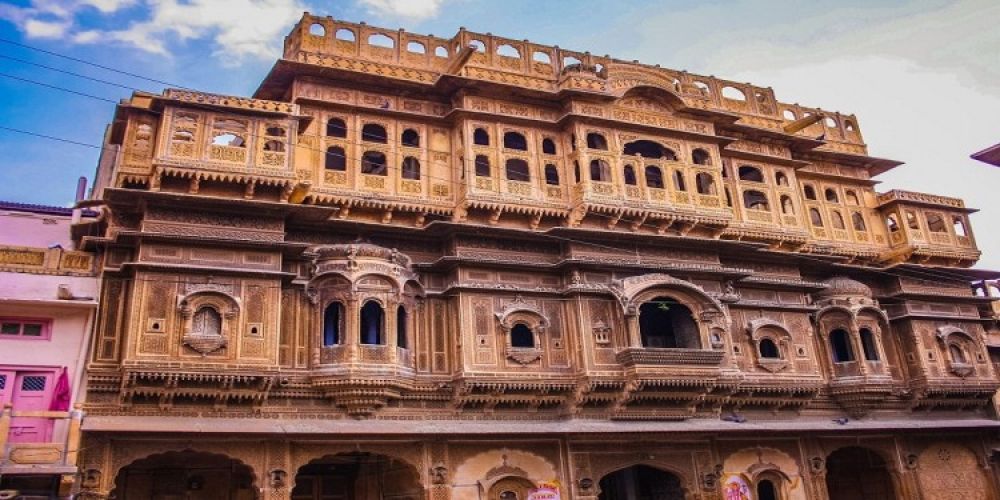

Nestled in the heart of the golden city of Jaisalmer, Nathmal ki Haveli stands as a testament to the architectural prowess of the late 19th century. It is an exemplary piece of the rich heritage that Rajasthan holds within its bounds. The haveli was built in the year 1885 for Diwan Mohata Nathmal, who was then the Prime Minister of Jaisalmer. The striking feature of this mansion is that it was constructed by two brothers, Hathi and Lulu, who worked on two opposite sides of the building, resulting in a symmetrical yet distinctly individualized facade.
The history of tourism at Nathmal ki Haveli is comparatively recent. Jaisalmer itself was a bit of an off-beaten path for tourists until the 20th century when its unique desert culture and breathtaking fortifications began to draw attention. As international and domestic interest in the region grew, Nathmal ki Haveli emerged as a prime example of Rajasthani architecture and art. With finely chiseled stone work, miniature style paintings, and splendidly carved balconies, the haveli is a favored spot for those interested in India's historical and cultural depth.
When visiting Nathmal ki Haveli, tourists are captivated by the two yellow sandstone elephant statues which guard the entrance, leading into grand courtyards and beautifully decorated interiors. It's a live-in museum where descendants of the original owners still reside, which adds to its charm and authenticity.
The latest trends in tourism around Jaisalmer, and in particular, at attractions like Nathmal ki Haveli, include a heightened interest in sustainable travel and experiences that offer deeper cultural immersion. Tourists are now looking for authentic interactions, opting to stay in boutique hotels or heritage stays that offer a more localized experience of the city.
Moreover, the rise of digital platforms and social media has put previously lesser-known destinations like Nathmal ki Haveli on the map. With visually stunning backdrops, the Haveli has become a popular spot for photographers and influencers, further bolstering its appeal amongst the younger generation of travelers.
In response to this trend, the tourism services have become more sophisticated, with a range of guided tours available in multiple languages, ensuring that the rich stories behind the Haveli's walls are shared with a global audience.
Responsible tourism is also gaining traction, with more tourists seeking to engage with and contribute to the local economy. This includes purchasing local handicrafts, which Jaisalmer is famous for, and participating in cultural exchange activities.
When planning your visit to Nathmal ki Haveli, make sure to allocate enough time to explore its intricate details and to possibly catch a glimpse of traditional Rajasthani lifestyle. The best time to visit Jaisalmer is during the cooler months, from October to March, when the desert sunshine is not as intense.
Remember, respecting the local customs and heritage when visiting such a historical site is paramount. Nathmal ki Haveli is not just a tourist spot, but a place where the past and present converge in the heart of Jaisalmer.
Jaisalmer is well-connected by road and train, with the nearest airport situated in Jodhpur. Nathmal ki Haveli is located in the main city area, making it easily accessible by local transportation.
As you witness the sun-kissed sandstone of Nathmal ki Haveli casting a warm glow at sunset, you're not just seeing a building but experiencing a slice of Rajasthan's living history.